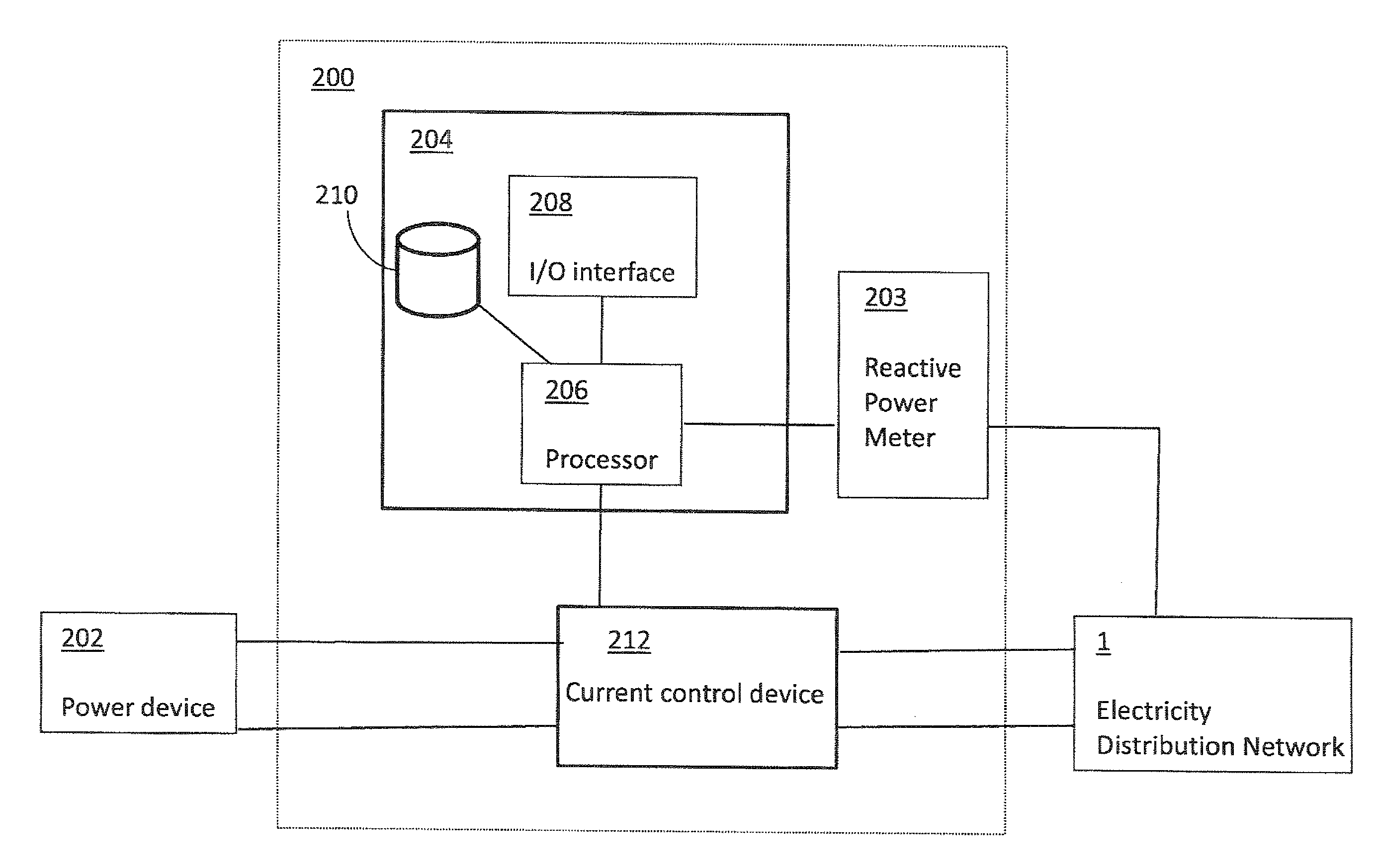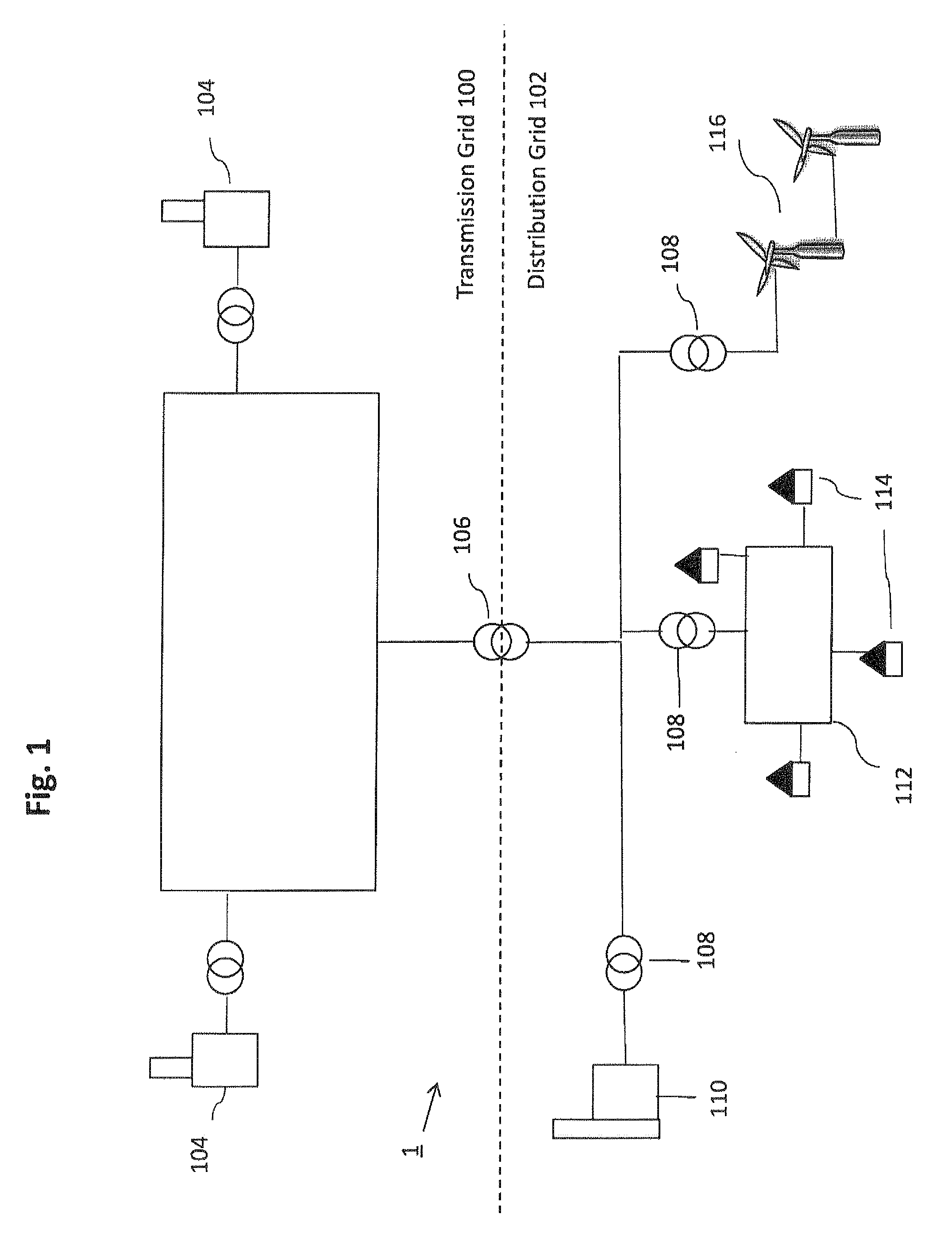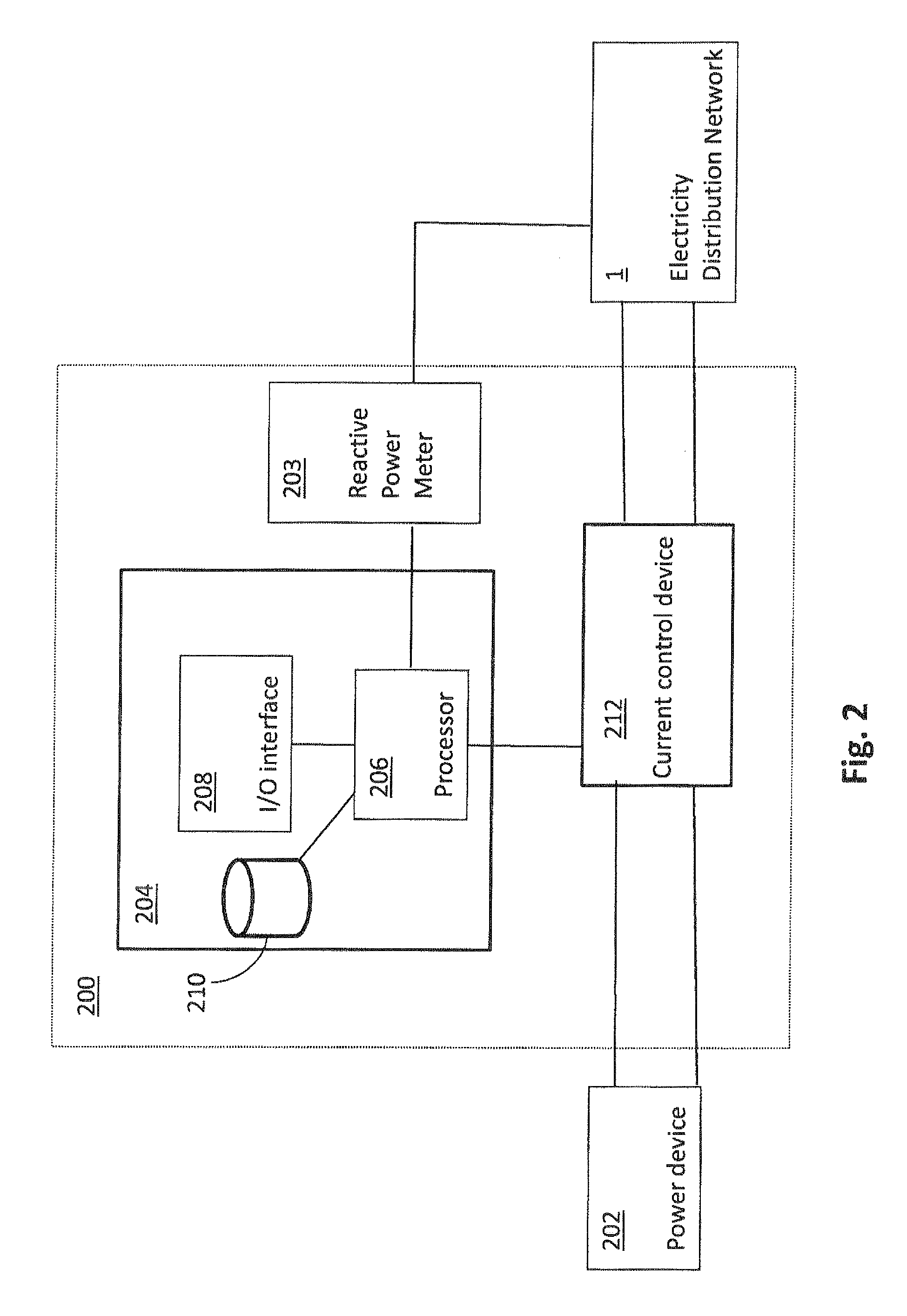Reactive power management
a technology of reactive power flow and reactive power, applied in the direction of reactive power adjustment/elimination/compensation, electric variable regulation, energy industry, etc., can solve the problems of phase shift in current flowing in the network with respect to voltage, burden on the power supplier, energy loss in the network, etc., to prevent oscillations and provide a hysteresis in provision
- Summary
- Abstract
- Description
- Claims
- Application Information
AI Technical Summary
Benefits of technology
Problems solved by technology
Method used
Image
Examples
Embodiment Construction
[0061]FIG. 2 shows a reactive power control device 200 for use in controlling a phase difference between the current and the voltage of electricity flowing in an electricity distribution network 1 at the location of a power device 202. The power device 202 may be a consumption device, for example, a low power consumption device, having a power rating of less than 500 W, such as an energy saving lamp, a mobile telephone charger, computing device supply, a medium sized power device, having a power rating of between 500 W and 10 kW, such as a personal electric vehicle (PEV), or a large power device, having a power rating of more than 10 kW, such as industrial machinery located at a factory. It should be noted that the devices may be single-phase or multi-phase; in the latter case the above power ratings apply per phase.
[0062]When the power device 202 comprises a power consumption device power is supplied to the power device 202 from the electricity distribution network 1, typically in ...
PUM
 Login to View More
Login to View More Abstract
Description
Claims
Application Information
 Login to View More
Login to View More - R&D
- Intellectual Property
- Life Sciences
- Materials
- Tech Scout
- Unparalleled Data Quality
- Higher Quality Content
- 60% Fewer Hallucinations
Browse by: Latest US Patents, China's latest patents, Technical Efficacy Thesaurus, Application Domain, Technology Topic, Popular Technical Reports.
© 2025 PatSnap. All rights reserved.Legal|Privacy policy|Modern Slavery Act Transparency Statement|Sitemap|About US| Contact US: help@patsnap.com



